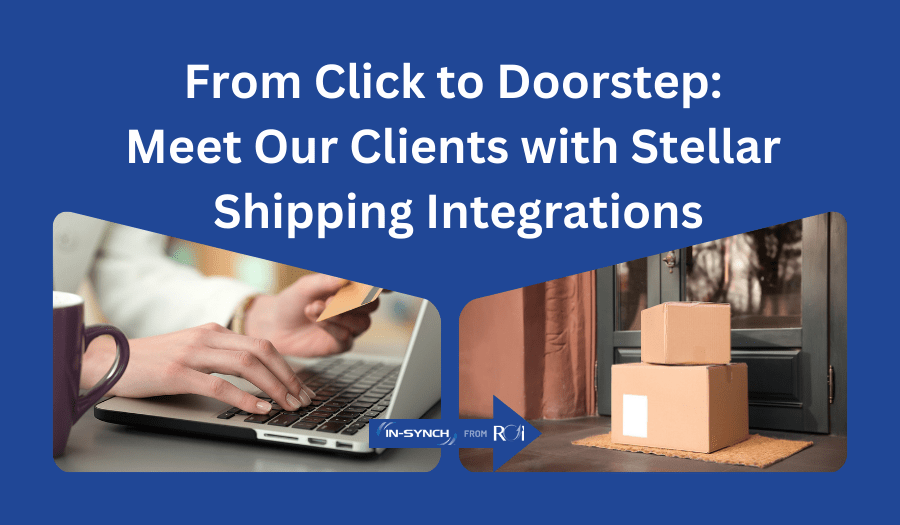By Ruth Richter • October 21, 2020

There’s no doubt that there are serious financial (and non-financial) boosts to a company that organizes itself around an ERP. The challenge has been properly organizing and orchestrating ERP data flow.
When data moves across systems, it’s not always in a standard format. Integration empowers data by making it agnostic across systems so it can be accessed and used by anyone in the business. That process is accomplished through integration patterns that standardize the entire integration process. You can ensure you get the data you need by empowering your teams with some basic understanding of data integration patterns.
This is part two of a three-part series. You can read part one here.
ERP Integration is Complex
Integration seems like a simple concept: Information from one system is put into another. It sounds like a simple point to point integration. But how simple is it really?
A valid customer record is needed before there can be a sales order in the ERP. Sometimes a new customer record must be created. Once the sales order then opens, the product sold must be listed. If part numbers or SKUs are even slightly different from system to system, a cross-reference must occur so that inventory levels accurately reflect this new sale. Then payment is recorded from the storefront customer and must be recorded in the ERP’s accounting module as a customer payment record that can be posted as a bank deposit.
At this point, complexity has ensued and the order hasn’t even shipped. Shipping methods must be matched, addresses validated, sales tax recorded, and shipping information sent out to the customer. Even in this “simple” example, there are multiple touch points in the ERP that must be mapped.
Popular ERP Integration Patterns
ERP integrations have multiple requirements; businesses that have successfully implemented these integrations have found helpful patterns, logical sequences of steps that solve a specific type of ERP issue. Common ERP integration patterns that businesses should consider as they plan their integration strategies include:
- Migration: Moving a specific set of data from one system to another at a particular point in time. This is part of what supports functionality shared across numerous teams in a business.
- Broadcast: Moving data from a single source system to multiple destination systems in real-time or near real-time. Essentially, this updates a one-way sync from one-to-one to one-to-many. For example, a broadcast pattern could update inventory levels across multiple sales channels.
- Aggregation: Taking or receiving data from multiple systems and copying/moving into one system. This pattern merges data into one application and negates the need to regularly run multiple migrations. It also promotes data accuracy by removing the opportunity for duplicate data.
- Bi-Directional Synchronization: Uniting multiple data sets in multiple systems, letting those multiple systems behave as one system while still maintaining the existence of different data sets. Ultimately, this pattern helps maintain data integrity across the synchronized systems while the different systems are performing different functions, all on the same data set.
- Correlation: Similar to the bi-directional pattern, but while bi-directional data patterns create new records for information that exists in one system and not the other, correlation only synchronizes data that is found in both systems.
Multiple kinds of business software can be integrated with ERP using different patterns that best serve the needs of both the data and the business. For online retailers, however, the most important ERP integration—no matter the pattern—is that with their e-commerce solutions.
Much of an e-commerce retailer’s customer data originates at the e-commerce site, where the business does its largest portion of interaction with intended customers. Data from these interactions can include leads, customers, orders, transactions, and shipping stats. All of this data is useful—whether in whole or in part—to various areas within the organization, and integrating the ERP with your e-commerce store is what will ensure that all necessary data is available to those who need it across the business.
Build In Bi-Directional Integration With IN-SYNCH
Making sure an ERP is well integrated and accessible can allow each area of a business to access necessary information and data, reducing information silos in the organization that may cause expensive mistakes or even missed opportunities. Finding the right integration patterns to ensure the right data from the right systems ends up in the right places is key.
IN-SYNCH® Sage 100 and Sage 100cloud integration by ROI provides bi-directional synchronization between Sage 100 and e-commerce platforms, third-party shopping carts, warehouse management software, and more. This scalable solution can connect to as many or as few solutions as necessary to ensure your e-commerce business runs as smoothly as possible. Find out if IN-SYNCH data integration patterns are right for your needs. Talk to an integration specialist now.




